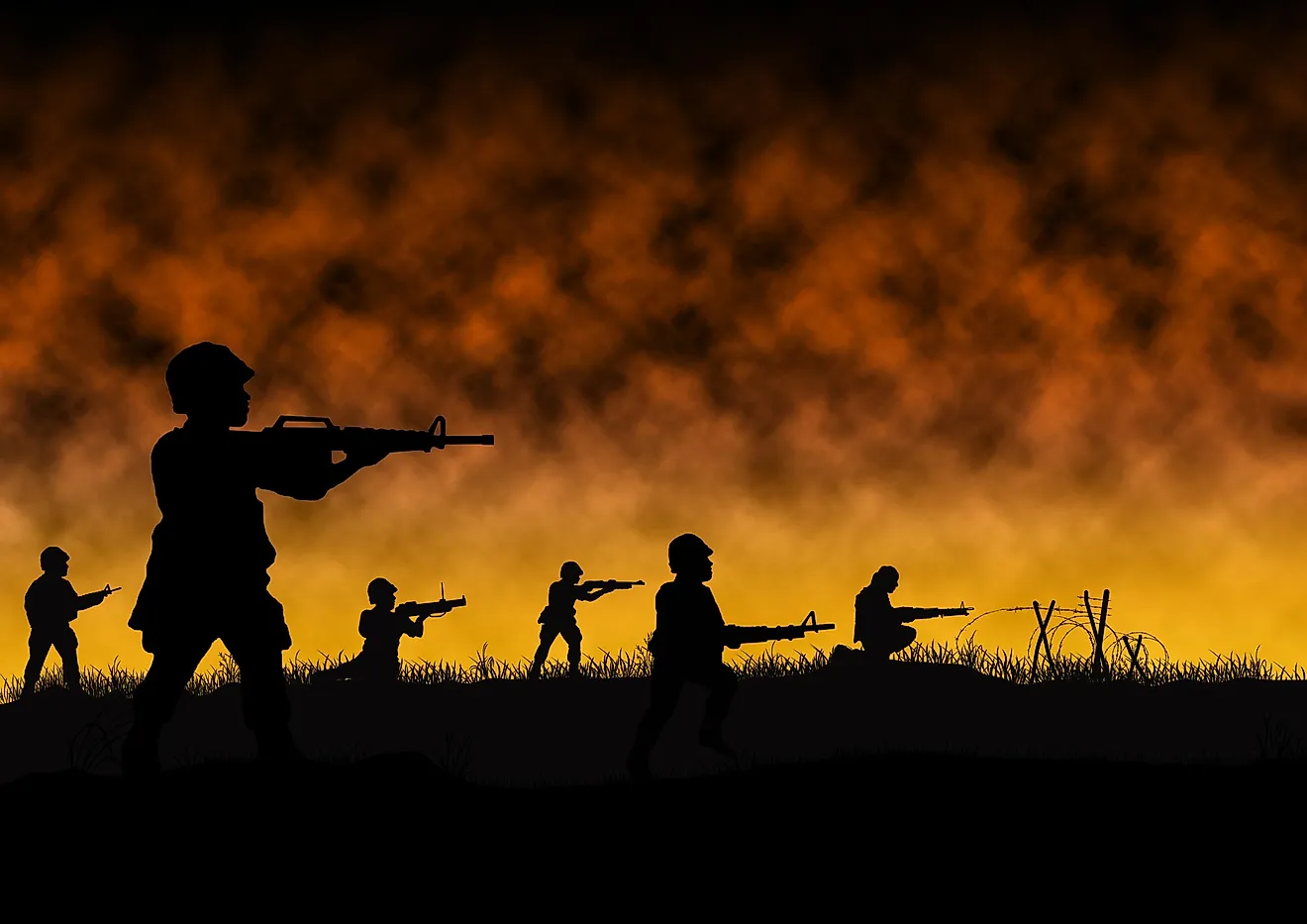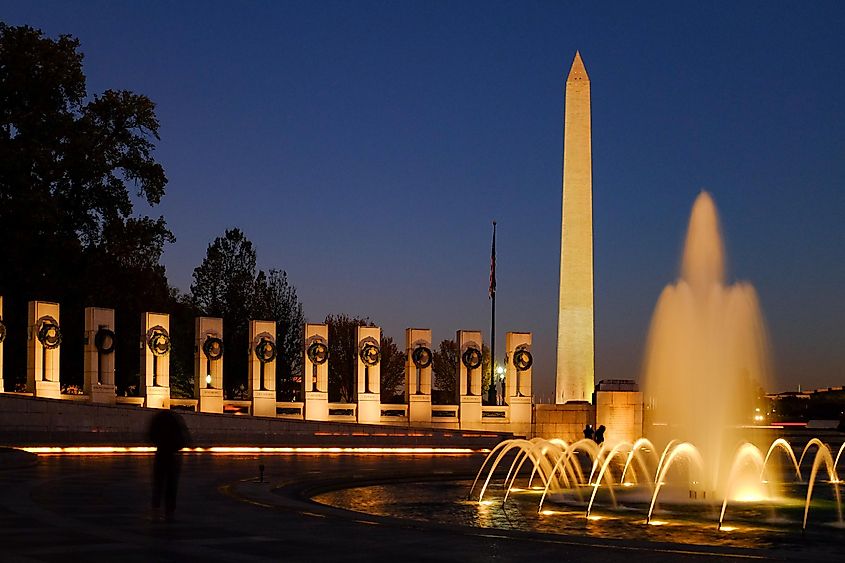Why The U.S Went To War With Vietnam

- The main reason for the U.S. involvement in Vietnam was to prevent the spread of communism in Southeast Asia.
- Japanese forces invaded Vietnam during World War II.
- Ho Chi Minh helped initiate the First Indochina War, which took place from 1946 to 1954.
The first wave of U.S combat troops invaded South Vietnam on March 8, 1965. The main reason for the American involvement in Vietnam was to prevent the spread of communism in Southeast Asia. It was a long and costly war that divided a nation. Why did it happen? What events led to this conflict that lasted almost twenty years and resulted in over 3 million deaths and many more casualties?
Before and After WWII

Vietnam is a Southeast Asian nation that was invaded by France in the mid-19th century. The French called it French Indochina and expanded its territories by conquering Cambodia, Annam, Laos, Tonkin, and Annam. A colonial government system was imposed, and the Vietnamese struggled against it.
Japanese forces invaded Vietnam during World War II, around the time the Vietnamese political leader, Ho Chi Minh was gaining strength and popularity. He believed in Soviet and Chinese communism and founded Vietnam’s Communist Party. He also led the Vietnamese Independence League, better known as the Viet Minh.
After World War II Japan withdrew from Vietnam, giving Ho Chi Minh the opportunity to take control. His forces took over the city of Hanoi and declared it the Democratic Republic of Vietnam. In 1949, France tried to set up the state of Vietnam and chose Saigon as the capital. The move was supported by their ally, Emperor Bao. Though both sides were pushing for a unified Vietnam, the French wanted to impose their western culture while Minh and his followers pushed for communism. This conflict ignited the First Indochina War, which took place from 1946 to 1954.
By 1950, the U.S. considered Viet Minh a communist threat and brought in military assistance for France. In 1954, the Viet Minh attacked Dien Bien Phu valley, with help from Chinese forces. The French were defeated and pulled out of the region. That same year, their government signed the Geneva Accords.
The Geneva Accords
The Geneva Conference of 1954 produced the Geneva Accords, a set of documents including military agreements signed by Vietnamese, Cambodian, Laotian, and French representatives. The provisions included:
- A cease-fire line down the 17th parallel, which divided Vietnam in half, with troops withdrawing within 300 days
- Communist groups and guerillas would both evacuate Cambodia and Laos
- Free elections would take place in Cambodia and Laos in 1955, with French troops remaining if requested
The Agreement also provided for the Final Declaration, which specified that subsequent Vietnamese elections would be held under supervision, with the objective of reunifying the country. During these negotiations, it was decided to split Vietnam into its southern and northern halves. The south (capital city: Saigon) would stay non-communist, while the north (capital city: Hanoi) controlled by Ho Chi Minh, would be communist.
The Domino Theory
Dwight D. Eisenhower was one of 9 U.S Presidents (1953-1961) in office during the Cold War – a period between 1947 – 1991 which saw great geopolitical tensions between the Soviet Union, the U.S and both their allies. Because both superpowers couldn’t use their military powers to fight each other without mutual destruction, rather than an outward war, the two countries used espionage, propaganda, and psychological warfare.
Eisenhower came up with the term “The Domino Theory,” when he stated that the fall of French Indochina to communists could start a “domino effect” in Southeast Asia, leading to the spread of communism. During a 1954 press conference, he stressed the importance of Vietnam to the U.S. economy.
The Second Half of the 1950s
In 1955, Ngo Dinh Diem emerged as the South Vietnamese leader. He was a Catholic nationalist, backed by the United States. Four years later, North Vietnam started building a supply route that went through Cambodia and Laos to South Vietnam. Its purpose was to support guerrilla attacks planned against the south. This supply route was called the Ho Chi Minh Trail.
U.S. intervention in Vietnam began gradually, with military and political advisors, economic aid, and troops provided to South Vietnam. As this played out, there were ongoing tensions between China, the Soviet Union, and the U.S. In July of 1959, the first U.S. soldiers were attacked and killed when guerrilla soldiers raided their quarters in Saigon.
The Early 1960s
Ho Chi Minh was succeeded by Le Duan, who became head of North Vietnam’s communist party. By 1963, there were close to 16,000 U.S. military personnel stationed in Vietnam.
South Vietnamese President Ngo Dinh Diem was assassinated by his own generals, a coup supported by the U.S and led by his successor, Duong Van Minh.
In August of 1964, the North Vietnamese torpedoed two U.S. destroyers in the Gulf of Tonkin. President Lyndon B. Johnson submitted the Gulf of Tonkin Resolution to Congress, which allowed him to “take all necessary measures to repel any armed attack against the forces of the United States.” At that point, there were over 23,000 U.S. troops in Vietnam.
On March 8, 1965, the first major wave of U.S. combat troops arrived on the shores of Da Nang in South Vietnam.
End of the War

The war finally ended in 1973, when the U.S and their allies were defeated but lasted two more years between the South and North Vietnam. The country suffered millions of deaths and casualties. 12 million people became refugees, while the war destroyed the nation’s economy and infrastructure. Despite the defeat of the U.S, their fear that communism would spread across the Asian continent never happened.
The Paris Peace Accords – a treaty signed on January 27th, 1973 established a cease-fire as well as the terms of the removal of the American troops from Vietnam.
On July 2nd, 1976 North and South Vietnam were finally unified under a communist government and the Socialist Republic of Vietnam was formally established.











